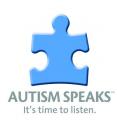Genetic finding identifies male-linked mutation associated with autism spectrum disorders
Autism Speaks, the world's largest autism science and advocacy organization, and an international consortium of researchers, along with participating families, joined together to announce additional new autism genetic discoveries. The results were published today in Science Translational Medicine. Based on analysis of genomes collected from almost 2,250 individuals, including almost 2,000 with ASD and 246 with intellectual disabilities, and more than 10,000 controls, the researchers found PTCHD1 mutations or copy number variant (CNV) associated with about one percent of the individuals with ASD or intellectual disabilities – almost all of them male – but in none of the control subjects.
"This finding begins to explain the sex bias we see in autism," remarked Autism Speaks Vice President for Scientific Affairs Andy Shih, Ph.D. "PTCHD1 is located on the X chromosome. Since males have one copy of the X chromosome while females have two, they have no 'back up copy' if there is a deleterious variant on the X chromosome."
"We believe that the PTCHD1 gene has a role in a neurobiological pathway that delivers information to cells during brain development – this specific mutation may disrupt crucial developmental processes, contributing to the onset of autism." said Dr. John B. Vincent, Senior Scientist and head of the Centre for Addiction and Mental Health (CAMH) Molecular Neuropsychiatry and Development Laboratory who led the study. "Our discovery will facilitate early detection, which will, in turn, increase the likelihood of successful interventions."
PTCHD1 is part of a neurobiological pathway that determines the development of human embryos. It is one of several genes recently implicated in both ASD and intellectual disabilities. Earlier this year, Autism Genome Project's report in Nature identified PTCHD1 as a genetic risk factor for autism. The current study, running parallel to the AGP study, focused on the molecular characteristics and potential clinical implications of the CNV associated with this specific gene in individuals with ASD.
"Interestingly, the data is also starting to tell us something about the dramatic variety of symptoms observed in the clinic," further explained co-senior author Dr. Stephen Scherer, Senior Scientist and Director of The Centre for Applied Genomics at The Hospital for Sick Children (SickKids), and Director of the McLaughlin Centre at the University of Toronto. "CNV in the protein-coding region tend to travel with intellectual disabilities while CNV in the nearby regulatory regions appear more associated with Asperger's or high-functioning autism. But, as often seems the case, symptoms associated with autism can also be more complex."
While each of these variants, found in this and the earlier AGP studies may only account for a small fraction of the cases, collectively they are starting to account for a greater percentage of individuals in the autism community, as well as providing insights into possible common pathogenic mechanisms. The overlap between autism susceptibility genes and genes previously implicated in intellectual disabilities further supports the hypothesis that at least some genetic risk factors are shared by different psychiatric developmental disabilities.
Finally, identification of a male-linked genetic mutation begins to address the previously unknown basis for often reported skewed male to female ratio in autism.
"Piece by piece, we are discovering genetic mutations that can cause autism. These findings will provide answers for families about what contributed to their autism," said Dr. Shih. "Furthermore, as we have learned from examples involving other genetic risk factors of autism (e.g., Fragile X, Rett, TSC), these genetic findings help us understand the underlying biology of autism, which can lead to the development of novel treatments."
Source: Autism Speaks
Articles on the same topic
- Link to autism in boys found in missing DNAThu, 16 Sep 2010, 4:38:32 UTC
Other sources
- Link to autism in boys found in missing DNAfrom Science DailyThu, 16 Sep 2010, 2:14:16 UTC
- Genetic finding identifies male-linked mutation associated with autism spectrum disordersfrom PhysorgWed, 15 Sep 2010, 19:07:14 UTC
- Mutation in some autistic boys foundfrom CBC: HealthWed, 15 Sep 2010, 18:21:09 UTC
